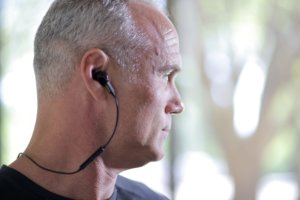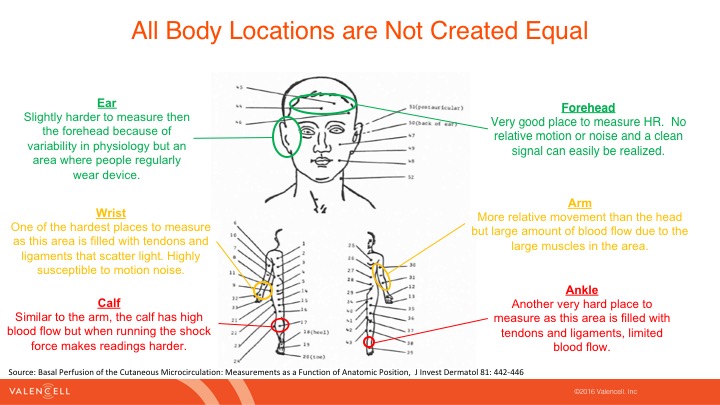Why Hearables Should be Your Number One Choice for the Gym
Many people now take for granted that biometric wearables and hearables “just work”. Everyone knows you can get heart rate from a smart watch, fitness band or a hearable device, right? While this is true, the reality is that depending on the type of activity, not all biometric wearables offer the same level of accuracy. Gym activities – Crossfit, lifting weights, push-ups, sit-ups, resistance training, etc. – are particularly hard on wrist wearables. Many people assume that applies to all wearables and hearables, but that is not the case.

Here’s why hearables, and not wearables, are the best option for most gym activities and fitness enthusiasts.
Heart Rate Sensor Location Affects Accuracy
The familiarity of wearing devices on the wrist and arm is one reason why most biometric devices are sold as watches or wrist bands. However, there are some significant disadvantages of wrist wearables that can affect the accuracy of the device when compared to other locations on the body.
Even though this might seem contrary to popular belief since the wrist and neck are the two locations where people are taught to take their pulse, there several factors contribute to the overall accuracy in wrist wearables. Just because the pulse can easily be taken by simply feeling for your heartbeat on the thumb side of the wrist doesn’t mean accurate data from a wearable can be obtained in this area of the body during activity.
In actuality, the wrist is one of the most difficult areas of the body to measure biometrics accurately. Since most wearables use optical sensors to shine light into the body to measure the amount of scattered light due to blood flow, accuracy can often be comprised in locations where there are more bone, muscles, and tendons. For more detail on how these devices work, see Optical Heart Rate Monitoring: Everything you Need to Know. Because the wrist has a high number of bones and tendons, the basic physiology of the wrist can often skew the accuracy of the measurement. Accuracy can be further decreased if your primary activity puts physical stress on the wrists like you might find with cross-fit workouts or weight lifting.

Similar challenges can be seen with devices placed on the arm and ankle, which begs the question—where exactly is the ideal spot for a biometric wearable? While the answer can depend on your specific activity, for consumers looking for a device to use primarily in a gym environment, hearables are one of the most accurate devices you can buy and often an overlooked option. Here’s more detail on why location matters in biometric wearables and hearables.
The Biometric Advantages of the Ear
While wrist, arm, and leg wearables are usually in motion during a workout, the ear is a more stable part of the body where optical noise from movement is limited. Bones, tendons, and muscles that can also disrupt the accuracy of optical sensors are minimal in this location as well, enabling a much cleaner optical signal to process.
Another reason why the ear is an ideal location for gym-based workouts are the number of arterioles located in the ear. Since arteriole banks found in the ear are connected directly to the carotid artery system, it is easier to obtain accurate data from blood flow characteristics and provide accurate feedback of what exactly is going on in the heart during exercise.
Last but not least, earbuds are a popular workout companion for many gym users, so it makes sense to include heart rate sensors in this form. Audio electronics like an iPod or smartphone can still be used without affecting accuracy of the device, and unlike a wrist wearable you can get real-time audio feedback without having to stop and look down at your device. This makes earbud-based wearables an all-in-one device that should be just as familiar as watch or band-type devices that many consumers have grown accustomed to.
Hearables Currently on the Market
Even though some consumers may not be as familiar with hearables as the offerings currently on the market for the wrist and arm, there are numerous options currently available that offer extremely accurate results while providing the added benefit of real-time audio feedback. In fact, there are more than 13 different hearables on the market today that can measure heart rate and other biometrics. Valencell is at the core of many of these products.
You’ll see more hearables coming to market later this year and next year as the trend toward hearables continues to build. If you are interested in more detail you can check out What’s Driving Growth in the Hearables Market or reach out to us by email.